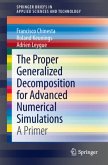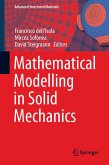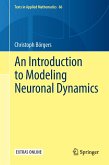This book is intended to help researchers overcome the entrance barrier to Proper Generalized Decomposition (PGD), by providing a valuable tool to begin the programming task. Detailed Matlab Codes are included for every chapter in the book, in which the theory previously described is translated into practice. Examples include parametric problems, non-linear model order reduction and real-time simulation, among others.
Proper Generalized Decomposition (PGD) is a method for numerical simulation in many fields of applied science and engineering. As a generalization of Proper Orthogonal Decomposition or Principal Component Analysis to an arbitrary number of dimensions, PGD is able to provide the analyst with very accurate solutions for problems defined in high dimensional spaces, parametric problems and even real-time simulation.
Proper Generalized Decomposition (PGD) is a method for numerical simulation in many fields of applied science and engineering. As a generalization of Proper Orthogonal Decomposition or Principal Component Analysis to an arbitrary number of dimensions, PGD is able to provide the analyst with very accurate solutions for problems defined in high dimensional spaces, parametric problems and even real-time simulation.
"This book provides a brief introduction to Proper Generalized Decompositions (PGD), with strong emphasis on computational aspects. The book discusses the implementation of PGD for the Poisson problem, parameter-dependent problems, linear-elasticity, and dynamical problems. For every problem, matrix assembly is developed and Matlab routines are presented." (Dante Kalise, Mathematical Reviews, July, 2017)








